#the gateless gate
Explore tagged Tumblr posts
Text

For the birds 021
04.10.2024
Intro 00:00 Go Outside–tired for thinking-01:23 Gollden–missing hawaii (a long outro)-03:46 Leaving–Sense of Place-08:35 weareforests–your song ! the radish-13:30 Tegu–2×4-18:39 The Gateless Gate–The Flickering Light of Dusk-24:04 Sunshine Playroom–Pause for a Comma-34:36 Hélène Vogelsinger–Elevation-37:14 Günter Schlienz–Besinnungspfad-41:50 Outro-59:41
#Go Outside#Gollden#Leaving#weareforests#Tegu#The Gateless Gate#Sunshine Playroom#Hélène Vogelsinger#Günter Schlienz#Echoes in the Valley#Imaginary North#Moon Glyph#Seil Records#Not Not Fun Records#Microsmose#Lighten Up Sounds#Vermont#Stockholm#Sweden#Toronto#North Bay#Ontario#Perth#Australia#Portland#Oregon#Fort Collins#Colorado#Frankfurt#Germany
2 notes
·
View notes
Text
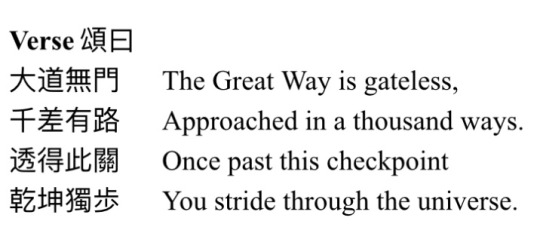
— The Gateless Gate. 12th Century. China
#buddhism#gateless gate#mumonkan#zen#Chan#Chinese#calligraphy#text#scripture#history#Buddha#enlightenment#meditation
41 notes
·
View notes
Text


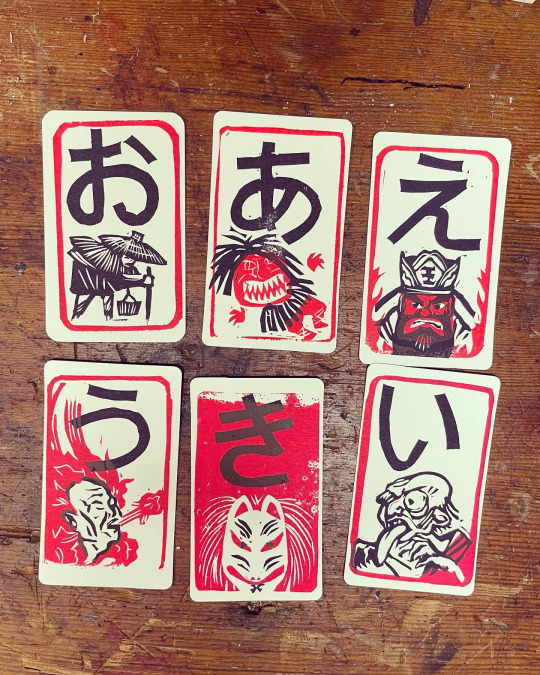





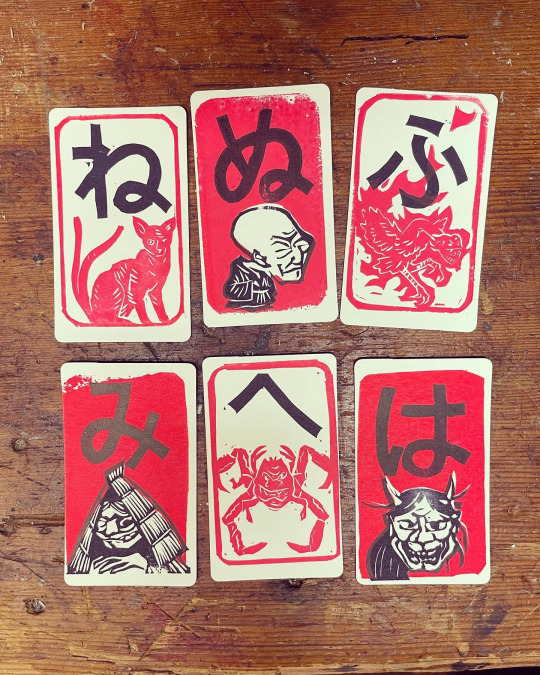

Hand-stamped yokai-themed Hiragana flashcards, made by Gateless Gate Studio.
#art#gateless gate studio#hiragana#folklore#japan#yokai#mikari-baba#ubagabi#chochin-obake#tsurubebi#nurarihyon#furaribi#mujina#nekomata#keukegen#mezu#suzaku#kuko#kitsune#tanuki#heikegani
8 notes
·
View notes
Quote
One day Deshan kept asking Longtan for instruction till nightfall. Longtan finally said, "The night is late. Why don't you go to bed." Deshan thanked him, made his bows, raised the door curtain and left. Seeing how dark the night was, he turned back and said, "It's pitch black outside." Longtan lit a lantern and handed it to Deshan. Just as Deshan reached for it, Longtan blew it out. At that Deshan came to sudden realization and made a deep bow. Longtan asked, "What have you realized?" Deshan replied, "From now on, I will not doubt the words of the old master who is renowned everywhere under the sun." The following day Longtan ascended the rostrum and declared, "There is a man among you whose fangs are like trees of swords and whose mouth is like a bowl of blood. Strike him and he won't turn his head. Someday he will settle on the top of an isolated peak and establish my way there." Deshan brought his sutra commentaries and notes to the front of the hall, held up a torch and said, "Even if you have exhausted abstruse doctrine, it is like placing a hair in vast space. Even if you have learned the vital points of all the truths in the world, it is like a drop of water thrown into a big ravine." He then burned all his commentaries and notes. After making his bows, he left.
Gateless 28
0 notes
Text
People get so mad at you for jumping fences but like why do none of them ever have gates. It's so annoying that there would be a path that shaves a couple minutes off my commute to work but there's a gateless fence in the way. Not my problem
11 notes
·
View notes
Text
He's Talking To Me Through The Lights!
Something that just hit me (and I'm not sure why I didn't make the connection earlier) is that we can't concretely say it was Vecna, or any version of Henward for that matter, that we saw in the shed with Will on Nov. 6th, 1983.
Now you're probably saying to yourself "Okay, James Henrysglock has finally lost the fucking plot". I promise you I haven't, and that I actually have a pattern that supports this. Please just like. Give me the chance to explain what I mean.
Let's look at the lightbulb in the Byers' shed when Will is snatched:

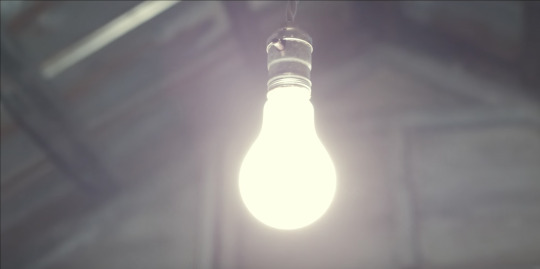
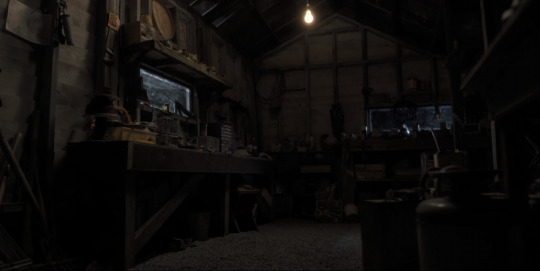
And we all go: "The lightbulb, like in the Creel family's attic! The blinding light! That's a trademark Vecna thing!"
Except it isn't.
First off, the lightbulb itself, while connected to to the Creel family's attic, isn't specifically a Vecna thing. It's also heavily attributed to HNL.
Second off, when we first see "Vecna" trance and kill (allegedly) in 1959, gateless kills, there is no blinding light. It's just flashing lights:
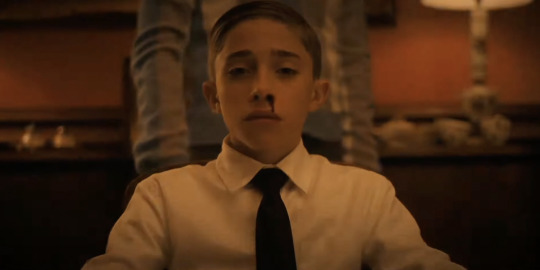

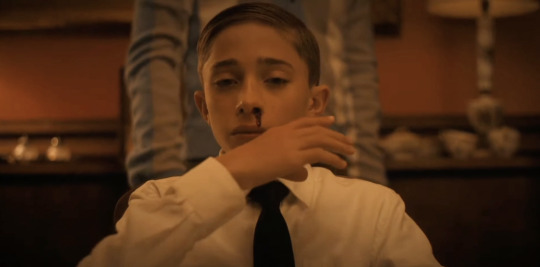


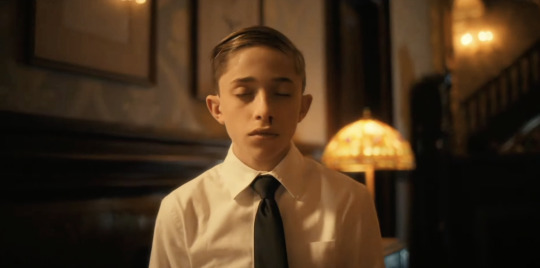
It's the same deal in 1979:

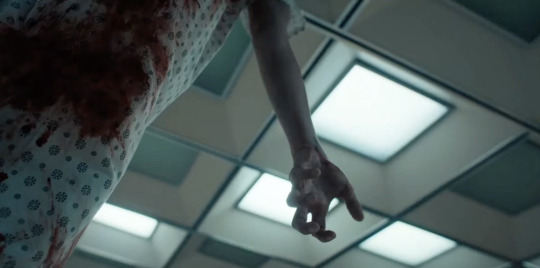

No steady, blinding light, just flashing lights.
So really, what's wrong here is the assignment of the light's behavior, that steady, blinding glow, to Vecna. Blinding lights have never been a Vecna-specific trait. Blinding lights are, in fact, consistently linked to gate events.
When do we see lights steadily flaring bright throughout Stranger Things??
Season 2: El closes the gate
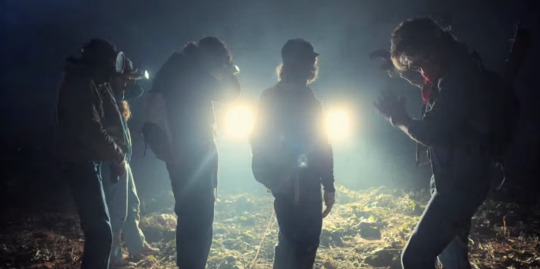
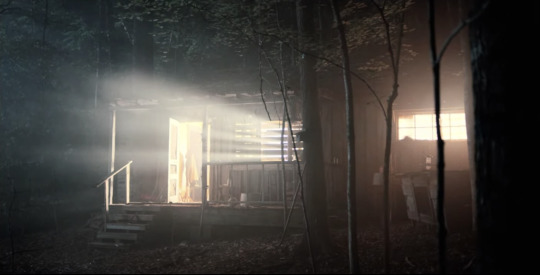
Season 4: Vecna kills Patrick and opens Watergate

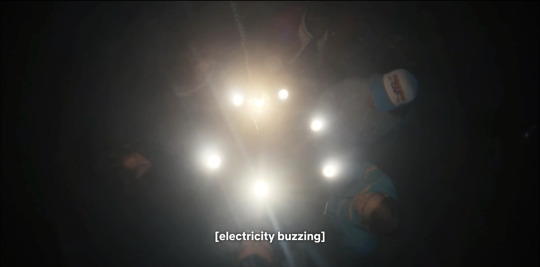
Season 4: El fights One


Now, this particular sequence becomes more complex when we consider a few confounding details:
1. El's Changing Eye Blood Between the blinding light sequence of teen El and the banishment of Henward by baby El, there is both a camera swap and a makeup swap. We never see bright-lights teen El again after this swap, despite irl El continuing to function in NINA the way she had been when her teen self was shown to us. This means we may not have seen the fate of whichever baby El teen El is representing, especially given that Martie and Millie match in blood pattern in BTS pictures (a blood pattern we never see on filmed baby El).
2. The Dematerialization-Gate Split + Mirror Swapping The gate and the dematerialization don't occur simultaneously.
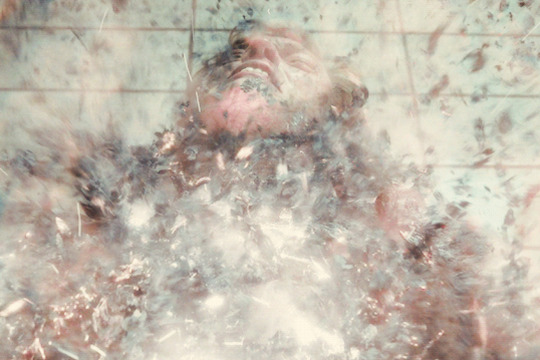


Nor do they occur within the same mirror orientation, with the same crack patterns, or with the same bloody gown pattern. They are separate events. We do not see El open wallgate, even though we know, logically, that she did so.
3. The Lighting The lighting when El dematerializes Henward is identical to the time she dematerialized the demogorgon: Dark, teal-grey, flashing lights.
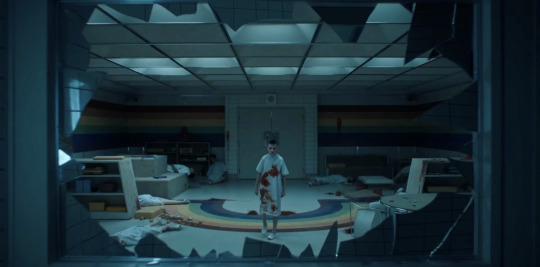
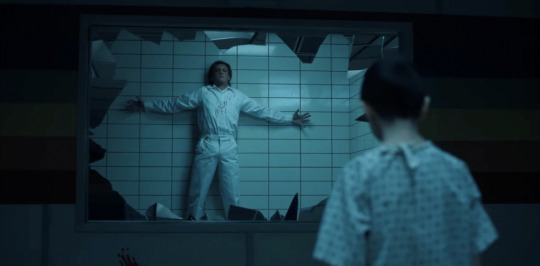
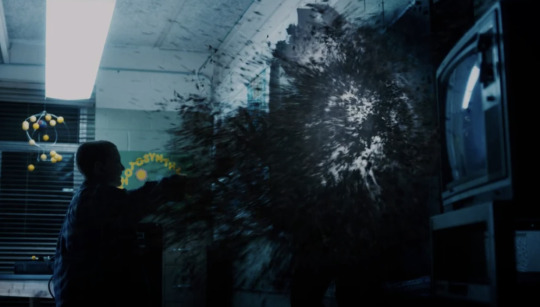

Why do I dredge all that back up?
Because the earlier bright light is most likely associated with the gate outcome. It's always a gate. Always.
"Okay, well, clearly Vecna opened a gate and yoinked Will, then."
Did he though? Because Vecna himself seems to think differently:


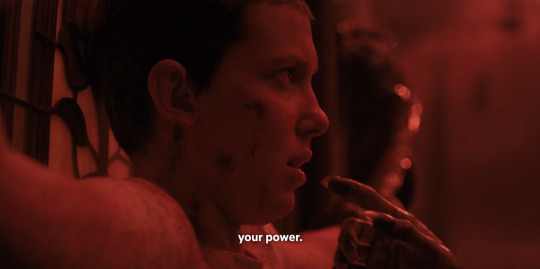
Vecna couldn't open gates until ST4, otherwise he would have done so earlier.
We also know it can't be the demogorgon that yoinked Will, either, because demogorgon attacks are associated with wildly flashing lights. The light in the Byers' shed just steadily brightens. I have a theory about the sound overlay, because a similar thing happens visually in 4.07 when they overlay the gate and dematerialization outcomes:
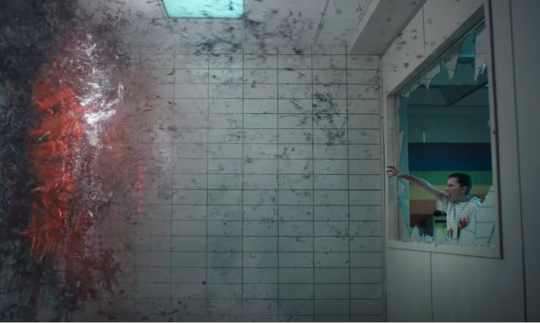
I wouldn't be surprised if there were multiple different things happening at the same time in different timelines re: Will's disappearance (I will touch on this below).
So, most of all, this begs the question: Why is the lightbulb in Will's shed behaving as though someone is opening a gate, when Vecna cannot yet open gates?
This leaves me with two main speculations:
1. The lights flared due to El opening Mothergate, given that that happened on the same day. El first contacts the Demogorgon at 1:33pm on Nov. 6th and panics. We aren't given a time for the opening of Mothergate, but it was sometime later, likely far later, given that it occurs during the shift of the guy who gets chomped in the elevator on the night of the 6th:

This would mean that someone else was in the shed with Will, likely someone from or in cahoots with HNL, which would explain how they were able to get his fake body accurate right down to the clothes he went missing in. Those may even have been his clothes on the doll, given that one of the newspapers said he was found being experimented on in HNL.
2. Will, panicking, opened his own gate to escape the situation. He ended up in the UD that way, hence why he's still wearing the clothes he disappeared in.
(Note, these situations are not mutually exclusive à la timeline theory and the differing newspapers surrounding Will's disappearance)
Either way, what the hell is going on here?
74 notes
·
View notes
Text

The Gateless Gate
Mumonkan, or The Gateless Gate, is a collection of Zen Koans that serve as tools for awakening beyond conceptual thought.
Each Koan is a riddle or paradox that cannot be solved through logic, pushing the practitioner to leap beyond the thinking Mind.
The “gate” is gateless because true insight is not entered from outside - it arises when we stop seeking and realize we've always been on the other side. Buddha Beings @BuddhaBeings
"The Great Way has no gate,
A thousand roads enter it.
When one passes through this gateless gate,
He freely walks between heaven and earth."
The Gateless Gate by Ekai, called Mu-mon, tr. by Nyogen Senzaki and Paul Reps
4 notes
·
View notes
Text
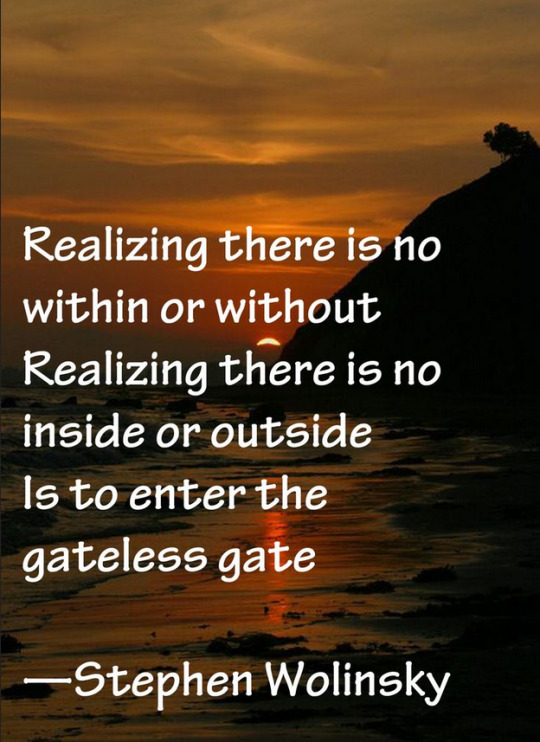
Has Anyone seen the Gateless Gate?
#consciousness#advaita vedanta#ramana maharshi#philosophy#spirituality#ashtavakra gita#sri nisargadatta maharaj#anandamayi ma#youtube#haridwar#los angeles#santa cruz#santa fe#new york city#boston massachusetts#selfinquiry#self realization#witness consciousness#ribhugita#mumbai#women empowering#equal rights for women#stillness#peace#awareness
3 notes
·
View notes
Text
Chan is called the "gateless gate" because it has no door to enlightenment. The methods fool you into thinking, “Aha, there's a door. Let's find the key." People will look for the key, the right method that will get them enlightened. They search for the door to enlightenment, and not finding it, they may give up. In fact there is no door. But according to each person's practice and karmic disposition or virtuous roots, suddenly he or she may gain entry and become enlightened. In the process of searching, one just walks through the gateless gate.
— The Method of No Method by Sheng Yen
4 notes
·
View notes
Text
3 notes
·
View notes
Text
I often think we are deceiving ourselves by imagining we are involved in spiritual pursuits; and spiritual activities are very fashionable these days. It is easy to join meditation retreats of one kind or another believing we are undertaking something meaningful. but in fact we may merely be indulging in a kind of spiritual recreation.
First of all, it is necessary to be free of any preconceived ideas about meditation, and also of any kind of habitual thinking, to starve the mind of ideas and thoughts. Zazen is not a way of gaining great knowledge; it is a way of humility there being nothing to acquire, nothing to keep; it is the transcendence of all that is habitual in us. It is this vast unknown original field of reality which no one has ever explored. Each moment is new, virgin soil.
Our whole lives should be penetrated by zazen; whatever we do should be none other than zazen; there is no spare time to indulge in anything, even zazen itself. And no preparation is needed for this, because meditation is our original way of life; it is the deep peace of the mindfulness we experience when our whole being is absorbed and opened by what we are doing now, be it sitting, or going about our daily activities.
Our own individual being is like a man in a small boat; and the boat is floating at the mercy of the waves on the sea. So long as we remain like that man in a boat we shall be easily influenced and disturbed by daily events, clinging to conventional beliefs and old habits in the hope that they will provide us with some kind of security; our entire lives may pass like that of a dreamer, or a drunkard.
Zazen is the recognition of the universal life, as it is, within us. Everyone is seeking eternal life and peace, but it is, miraculously here within this moment. Deep peace does not always come from inspiration, special knowledge, or practice; it is present in each and everyone's exhalation, in the deep silence of no-mind.
Zazen is a primordial practice, essentially the trinity of body breath, and mind; and true zazen will not be opened in us until our sitting posture, breathing, and mind are correctly adjusted. Daily practice, awakened determination and teachings bring about this trinity of zazen. We must sit with the back straight and breathe calmly leaving thoughts as they are to come and go like clouds in the sky. Our eyes will naturally be cast to the ground in front of us, not looking at anything; everything around us naturally being reflected, as it is. When we have no focus inside or outside of us, we have 'ten direction eyes', and are free from everything.
Breathing is the rhythm of the universe; it will awaken us to the truth that there is nothing but the breath of the cosmos, coming from an immaculate origin.
To sit in zazen is to experience transparency and nothingness, as well as endless abundance. To sit in zazen is to discover the one within who is born anew every moment of this timeless reality. When one acts with intention, however, there is a split between God and man. To sit and sit without one's 'self' is real sitting.
Do not have satisfaction, or dissatisfaction — Just sit and sit and sit. Once sitting is truly settled, the mind is free from wandering, and one is peace itself. To sit firmly and unconditionally is to realize one's original simplicity and to understand clearly that very little is needed in ordinary life. Seeing this, one is purified.
Zazen is the cessation of the everyday business of thinking! It is, in fact too simple to want to continue — doing nothing, expecting nothing, getting nothing! But we should not be sitting-machines. If our everyday lives are unsound, it is impossible to practise the real way of zazen. If zazen is not the son of daily life, it is a lie. But the opposite is also true — daily life is the son and zazen the mother.
We do not need a particular time to be at 'the gateless gate of dharma', it is enough if we sit in calmness for a while each day Being busy is not the same as having the empty sky in our hearts. If we sit we find that we can sit however busy we may be. Time will be found for eating and sleeping. So, if we say we have no time for meditation, what we are really saying is we have other priorities.
We are all beginners. This is not only true, but necessary — even for someone who has been practising for more than one hundred years. This is not trite sentiment. We need the beginner's mind in everything, whatever we do, whoever we are.
Expert practitioners are naturally able to discern and rectify their attitudes and actions the moment the need arises. They are always able to abandon their own selves. They are always beginners.
This is the meditation of infinite awakening; this sitting does not remain as our own.
Generations of peoples, primarily in Asia, have maintained that the historical Buddha, Gautama, invented zazen, and so was an Absolute God in zazen. The truth is, of course, zazen was not born of, nor created by the historical Buddha; Buddha was born of the unfathomable depths of zazen. We too may be born from the same place, as countless buddhas have in the past. We are all absolute perfection in zazen, infinite perfection — the transcendence of ourselves; the transcendence of the practice; the transcendence of all things. Zazen is and was the mother of Buddha. We should confirm this with our own direct experience — otherwise we shall be carried away by man-made stories and the euphoria of dogma; and this is not our true practice.
-- Hôgen Yamahata, Zazen: Sitting Meditation
7 notes
·
View notes
Text
Vanessa’s house is the biggest on the block. It sits at the top, overlooking the rest, a beautiful white gate growing unidentifiable purple flowers that change to yellow and blue as the year drags on. The gate is always locked, but the contrasting garden that thrives in the front yard makes it all seem welcoming anyway. I’ve never been inside, but the rumors say that there’s a life-sized painting of Vanessa’s great grandaddy hanging above the real fireplace, that Vanessa has a trust fund in her bank account, that the only reason they live here, instead of somewhere where they’re surrounded by people like them, is because of Vanessa’s daddy’s work.
Her’s may be the biggest, but Charlie’s and oSamantha’s are pretty close. They were no small feats, even looming next to Vanessa’s, with their tall structures and shameless flaunting, even more so considering the other buildings they stood near. The rows of houses get bigger and bigger the further you drive up the hill. The people are haughtier, and the grass, in an almost funny way, is literally greener on the other side.
We live at the bottom, and not very proudly. Stock gray tin roof that causes water to run down its tilted surface, across the rusted gutters, into the house in a way that drip, drip, drips into the bowls we place on the concrete floor. There are only a few houses that look like ours, and the kids sit at the curbs and play jacks and trade dimes and nickels for quarters at the corner store. Past that, the road tilts at an almost 45 degree angle, and another layer of wealth is added for every new house.
It was hard to get used to at first. In Illinois, there wasn’t a Vanessa’s house or a Charlie’s house or a Samantha’s. Our old neighborhood wasn’t divided from those with money and those without. Everyone there had the same gateless front yard where nothing but weeds grew, the same hole in the big toe of their shoe, the same fifty-cent deck of cards to entertain themselves.
I never used to be ashamed of where I lived, because I never had to worry about looking good in front of kids with money, but ever since we moved here, it’s been different. Vanessa told me I could pretend her house was mine, so the embarrassment isn’t as bad, but that doesn’t change the fact that I know where I live. No, I say, pointing to the sad, poverty-wracked building, that’s not where I live, I actually live there, and I’d point from my bus seat to the top of the hill, admiring the way Vanessa’s gleans in the sunlight like gold underground, feeling pride in a place I didn’t even live in. After Illinois, when Mom needed a change of scenery and Daddy needed a reason not to drink, that’s the place we picked. The biggest house on the hill. The one that overlooks the rest.
| k. - @nosebleedclub prompts. march v. drive up the hill
#nosebleedclub#fiction#musings#writing#poetry#original poetry#story prompt#original story#writing prompt#prose poetry#original writing#prose piece#soft poetry#creative writing#writeblr#writers on tumblr#writers and poets#prose poem#poem#poetryblr#poets on tumblr#original poem#prose#poetic prose#original prose#fictional writing
4 notes
·
View notes
Text
Untitled
Gaze into this golden epoch.
Here the first
and last man
stands at the edge of the world—
Singing poems to no one.
The waters dangle off the precipice,
like crystalline stalactites,
dripping naught.
And he, like antkind,
Waltzes to silent numbers
shrouded in the secrecy
of isolation: the silent killer.
He gives
more than it
which takes everything
from him.
As the dwarves in death,
or the seabirds to the sailor-men atop rocks,
like Esther on the motorway: driving
in idealized democratic notions
of what she wants in her life,
drove headfirst into the intersection
between an exit ramp and twirled
like clockwork
off the rails and into shallow waters.
The gates open up,
spilling with a golden liquid,
whiter than the sun,
swirling around his being,
and in moments of trickling time,
he becomes void of human shape
now shining too—
walking through a gateless garden,
the beach subsides,
and time echoes away:
this music for everything,
the waltz that never ends
and ends for everyone.
6 notes
·
View notes
Text
Morning Meditation — The Great Way has no gate.
Morning Meditation — The Great Way has no gate. https://wp.me/pFy3u-7Xz
‘The Great Way has no gate, a thousand different paths. If you pass through this gateless gate, you’ll walk freely in the Universe.’ Zen master MumonFrom the Mumonkan Dandelion in the railings. On our Twitter account, Buddhism Now @Buddhism_Now, most mornings we post a ‘morning meditation’ like the one above. On the net, of course, it’s morning, afternoon, evening, or nighttime 😀…

View On WordPress
3 notes
·
View notes
Text
Once there was a monk who asked, “What is the meaning of the Patriarch coming from the West? (What is Zen?)”
The master said, “The oak tree in the garden.”
- The Gateless Gate, Case 37
0 notes
Text
Zen Koan #8: Hakuin’s “What Is the Sound of One Hand?”
For one new koan every week, join the calendar here.
Bookmark this page to come back to it later.
Zen Koan #8: Hakuin’s “What Is the Sound of One Hand?”
Full Archive Here.
Context: Hakuin Ekaku (1686–1769) was a Japanese Zen master who revitalized Rinzai Zen. He created many koans.
His most famous: “Two hands clap and there is a sound; what is the sound of one hand?”onehandspeaks.com. This koan, often shortened to “What is the sound of one hand clapping?”, is usually the first koan assigned to novice monks in Rinzai Zen.
Commentary: Hakuin intended this koan to arouse great doubt and concentration. At first glance, it sounds like a riddle or nonsense: one hand alone makes no sound – or does it? The student might be tempted to answer with a joke (“silence!” or by clapping one hand on their body or a table). But any quick answer misses the point.
The “sound of one hand” is not a literal noise; it is sometimes called the “sound of one hand washing”, meaning it washes away delusion. In some accounts, Hakuin came up with this koan after a neighbor asked him why he meditated – he answered it was so he could hear the sound of one hand.
The neighbor was mystified, but Hakuin promised him that if he died without hearing it, Hakuin would listen at his grave and tell him. This dramatic tale underscores Hakuin’s flair – he wanted to plant a question that would consume the student’s whole mind. In koan training, “one-hand sound” can’t be solved by reasoning. The student must turn hearing back on itself – what is the “sound” of the mind when all duality (two hands) is collapsed into unity (one hand)? The “one hand” can symbolize the One Mind.
Hakuin’s koan drives the student to a precipice: trying to “hear” the unhearable eventually forces a leap to a new mode of perception. Zen lore is full of stories of monks struggling with this koan for days, weeks, months – until in deep fatigue or despair they suddenly catch an inner sound (or insight) and experience kenshō (an initial awakening). Hakuin himself stressed that one must “become one with the sound.” Some say when you truly hear the one-hand sound, the whole universe is ringing. Interestingly, Hakuin gave this koan to laypeople as well – it appears in his writings that even village women practiced it and gained clarity. Its wording has entered pop culture and everyday idioms. Yet its true purpose remains what Hakuin intended: to baffle the ordinary mind. The koan is not asking for an answer like “It is the sound of silence” – it is inviting you to experience the soundless sound. One Zen verse about it says: “If you hear it, all affairs are settled.” Perhaps it is the same sound poet Basho heard as a “old pond / a frog jumps in – / plop.” Perhaps it is what you hear right now, if you really listen. What is the sound of one hand? Listen…
Zen Koans: The Gateless Gate to Insight
Zen koans are short, paradoxical anecdotes or questions used in Zen Buddhism to provoke deep reflection and awaken insight beyond logical reasoning. A classic koan often features an encounter between a student and a master where the master’s response is unexpected or seemingly nonsensical. Koans are not riddles with trick answers; instead, each koan is a “Gateless Gate” – a barrier that the logical mind cannot pass. Only by dropping analytical thinking and engaging one’s whole being can one penetrate a koan and experience a shift in consciousness. As 18th-century master Hakuin Ekaku described, “From the very beginning all beings are Buddha... It is like water and ice... Stop the movement to grasp or reject and behold: the water flows clear and freely” – a poetic summary of the koan spirit of letting go and directly seeing reality.
Koans emerged within the Chán/Zen tradition of China during the Tang and Song dynasties (7th–13th centuries) and were later transmitted to Japan, Korea, and Vietnam. Koan practice involves contemplating these stories during meditation or daily activities, often under guidance of a teacher. The seemingly illogical responses of the masters are designed to frustrate the discursive mind and force the student to turn inward, smashing conventional dualistic thinking. The great Zen teacher Wumen (Mumon) said one must “pass through the barrier of the ancients” to realize enlightenmentsacred-texts.com. In koan practice, great doubt and great faith work together – as the student’s habitual thinking gets tied in knots, a breakthrough becomes possible.
Classic Collections of Koans
Over generations, Zen teachers compiled koan collections with commentary to aid students. Three of the most famous are The Gateless Gate (Mumonkan), The Blue Cliff Record (Hekiganroku), and The Book of Equanimity (Shōyōroku):
The Gateless Gate – compiled in 1228 by Chinese master Wumen Huikai (Mumon Ekai). It contains 48 koans (plus one added later), each with Wumen’s commentary and verse. The title “Gateless Gate” indicates that the only barriers to enlightenment are our own attachments. Wumen’s cases include famous dialogues like “Joshu’s Dog”, “Mu”, and “Nansen Cuts the Cat”. Wumen’s brief commentaries are often wry or poetic, designed to jolt the reader’s mind into a new perspective.
The Blue Cliff Record – a 12th-century collection of 100 koans, expanded from earlier compilations by master Yuanwu Keqin. The Blue Cliff Record includes extensive commentary and verse for each casebluecliffrecord.ca. These koans are drawn from the golden age of Zen in Tang/Song China and feature many renowned masters. The Blue Cliff is known for its literary elegance and subtle, layered analysis – in fact, it was once suppressed for fear monks would intellectualize its poetry instead of directly realize the truth. Nevertheless, it remains a treasure trove of Zen wisdom, including koans like “Every Day Is a Good Day”, “The Highest Meaning of the Holy Truths” (Bodhidharma’s encounter with Emperor Wu), and Layman Pang’s stories.
The Book of Equanimity – also known as the Book of Serenity, compiled by Wansong Xingxiu in the 12th century. It contains 100 koans (with some overlap with the Blue Cliff) and emphasizes balanced, peaceful reflection – hence “equanimity.” Each case is accompanied by verses by earlier master Hongzhi. The Book of Equanimity includes cases such as “The World Honored One (Buddha) Points to the Ground”, “Jizo’s Most Intimate”, and “Rinzai’s True Person”. It is valued in the Sōtō Zen school for its gentle yet profound approach.
Each of these collections became a classic, studied by monks and lay practitioners alike. In the Rinzai Zen tradition (especially in Japan), a teacher might assign koans sequentially to trainees – starting with a “first barrier” koan like Mu or “What is the sound of one hand?”, then moving through dozens or even hundreds of koans over years of training. In Sōtō Zen, koans are not assigned in the same way, but they still inform teachings and are reflected upon during zazen (sitting meditation) or in daily life stories.
Koans are “alive” – not mere texts to be parsed, but encounters to be experienced anew by each practitioner. There is a saying that “a koan is not answered, it answers you.” In working with koans, one isn’t solving a puzzle so much as allowing the koan to work on one’s own tightly held perspectives. A genuine response to a koan comes not from the intellect but from one’s whole being, often spontaneously. It could manifest as a word, a gesture, a deep bow – or simply a fundamental shift in understanding. The commentaries and verses provided by the classic koan collections are there not to explain the koan’s “solution” (indeed, any such explanation could spoil it), but to point towards the state of mind of the masters and to inspire the adept. They often use allusions, poetry, or humor to hint at the deeper meaning.
Below, we explore 100 traditional Zen koans drawn from the Mumonkan, Blue Cliff Record, Book of Equanimity, and other classic Zen lore. For each koan, we present the original story or exchange (in English translation), give a bit of historical/spiritual context about the teachers or setting, and offer a brief commentary or interpretation to illuminate the key insight or paradox. These koans are not meant to be “understood” in a conventional way – rather, let their images and words resonate beyond reason. As Wumen said in his preface to The Gateless Gate, “If you do not pass the barrier and do not shatter your illusions, you will remain a ghost clinging to bushes and grasses.” But if you step through the gateless gate, even the most ordinary moment – hearing the rain drip, seeing a flower bloom, washing your bowl – can reveal ultimate truth.
One Hundred Zen Koans (with Context and Commentary)
Below is a curated list of 100 classic Zen koans. They span the early Chinese masters (6th–10th century), the golden age of Zen (Tang/Song dynasties), and a few later and modern anecdotes that have entered Zen teaching. Each koan is titled by a distinguishing phrase or subject. The context notes the protagonist master (and era, if known) or source, and the commentary highlights the paradox or insight. Many of these koans appear in the aforementioned collections, indicated in parentheses for reference (GG = Gateless Gate, BCR = Blue Cliff Record, EQ = Book of Equanimity). Whether a koan is encountered in formal practice or casual reading, it can serve as a “finger pointing at the moon” – do not fixate on the finger (the words), but look to the moon (your own direct experience)!
Full Archive Here.
Original post here: https://www.antonvolney.com/p/zen-koan-8-hakuins-what-is-the-sound-bf9
0 notes